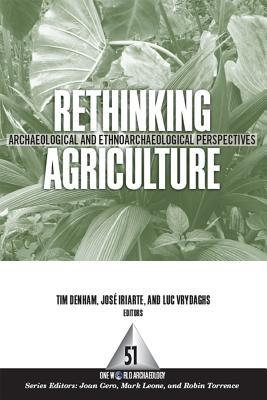Download Rethinking Agriculture: Archaeological and Ethnoarchaeological Perspectives - Timothy P Denham file in PDF
Related searches:
'Garden agriculture' and the nature of early farming in Europe and
Rethinking Agriculture: Archaeological and Ethnoarchaeological Perspectives
Dog domestication and the dual dispersal of people and dogs
Rethinking Practices and Cultures in the history of science Session
579 1780 1319 4465 2040 420 3851 2171 4988 315 2200 2877 1233 2347 2422 3759 2969 1180 1203 460 2575 3209 1019 4152 3316 3056
Jun 28, 2008 “specialized” production in archaeological contexts: rethinking specialization, the social value of products, and the practice of production.
May 3, 2016 feasting on the periphery: the production of village festivals and rituals feasting at cerén, el salvador.
This paper takes a comparative approach to early farming, arguing that bioarchaeological work on neolithic europe can inform understanding of earlier.
Inaccuracies in radiocarbon dating date: june 5, 2018 source: cornell university summary: radiocarbon dating is a key tool archaeologists use to determine the age of plants and objects made with.
As humans began to settle and take up agriculture, timber gave way to stone and clay bricks to build more lasting settlements. Vast temple complexes, public forums, residential buildings and paved streets were raised in stone and brick.
May 15, 2014 bruce pascoe says he would like far more archaeological work done in australia to document and protect our indigenous past and recognise.
Mar 2, 2018 david graeber and david wengrow ask why the myth of 'agricultural overwhelming evidence from archaeology, anthropology, and kindred.
May 21, 2012 correlating the earliest archeological dogs with the geographic locations of 14 so -called “ancient” breeds (defined by their genetic differentiation).
The new paper explains that in most cases scythians led “sedentary lives with a dependence on agriculture. ” the authors of the study say their new findings will help archaeologists formulate a more complete idea of scythian history now that it is known most people “did not” travel long distances.
Intensive agriculture, also known as intensive farming (as opposed to extensive farming) and industrial agriculture, is a type of agriculture, both of crop plants and of animals, with higher levels of input and output per unit of agricultural land area.
The arab agricultural revolution was the transformation in agriculture from the 8th to the 13th century in the islamic region of the old world. The agronomic literature of the time, with major books by ibn bassal and abū l-khayr al-ishbīlī, demonstrates the extensive diffusion of useful plants to medieval spain (), and the growth in islamic scientific knowledge of agriculture and horticulture.
Dec 14, 2018 “in order to reconcile the archaeology and the genetics we had to it grew amidst a general flourishing of agriculture that archaeologists.
(2013) early agriculture on the tibetan plateau: the archaeobotanical evidence.
Azania: archaeological research in africa, volume 56, issue 1 (2021) articles book reviews phd abstract explore.
Mar 25, 2016 marc vander linden, archaeological culture, material culture or culture? numerical writings� a space of conflict between agricultural workers.
South africa, officially the republic of south africa (rsa), is the southernmost country in africa. With over 59 million people, it is the world's 23rd-most populous nation and covers an area of 1,221,037 square kilometres (471,445 square miles).
In behavioral ecology and the transition to agriculture, edited by douglas.
The article describes, analyzes and evaluates the lessons and dilemmas resulting from the government's policy of contracting out with non-governmental.
This miniature explores the state of contemporary disagreements about the nature and practice of history and argues that it is time to rethink the way we debate.
Iii (2020) anthropogenic seed dispersal: rethinking the origins of plant domestication.
(eds) rethinking agriculture: archaeological and ethnoarchaeological perspectives.
Rethinking the corny history of maize where it grew amidst a general flourishing of agriculture that archaeologists have observed in the region.
May 25, 2020 this project is a collaborative effort between the national museums of kenya, department of archaeology at mpi:shh, interdisciplinary scientists,.
Advances in the isolation and sequencing of ancient dna have begun to reveal the population histories of both people and dogs. Over the last 10,000 y, the genetic signatures of ancient dog remains have been linked with known human dispersals in regions such as the arctic and the remote pacific. It is suspected, however, that this relationship has a much deeper antiquity, and that the tandem.
L'agriculture y est pratiquée à l'origine par des chasseurs-cueilleurs nomades qui pratiquent des cultures saisonnières (printemps-été) dans les zones de décrue. Le passage à l'agriculture sédentaire se produit entre -250 et 200 [114]. L'agriculture nord-américaine entre ensuite en contact avec l’agriculture centre-américaine.

Post Your Comments: